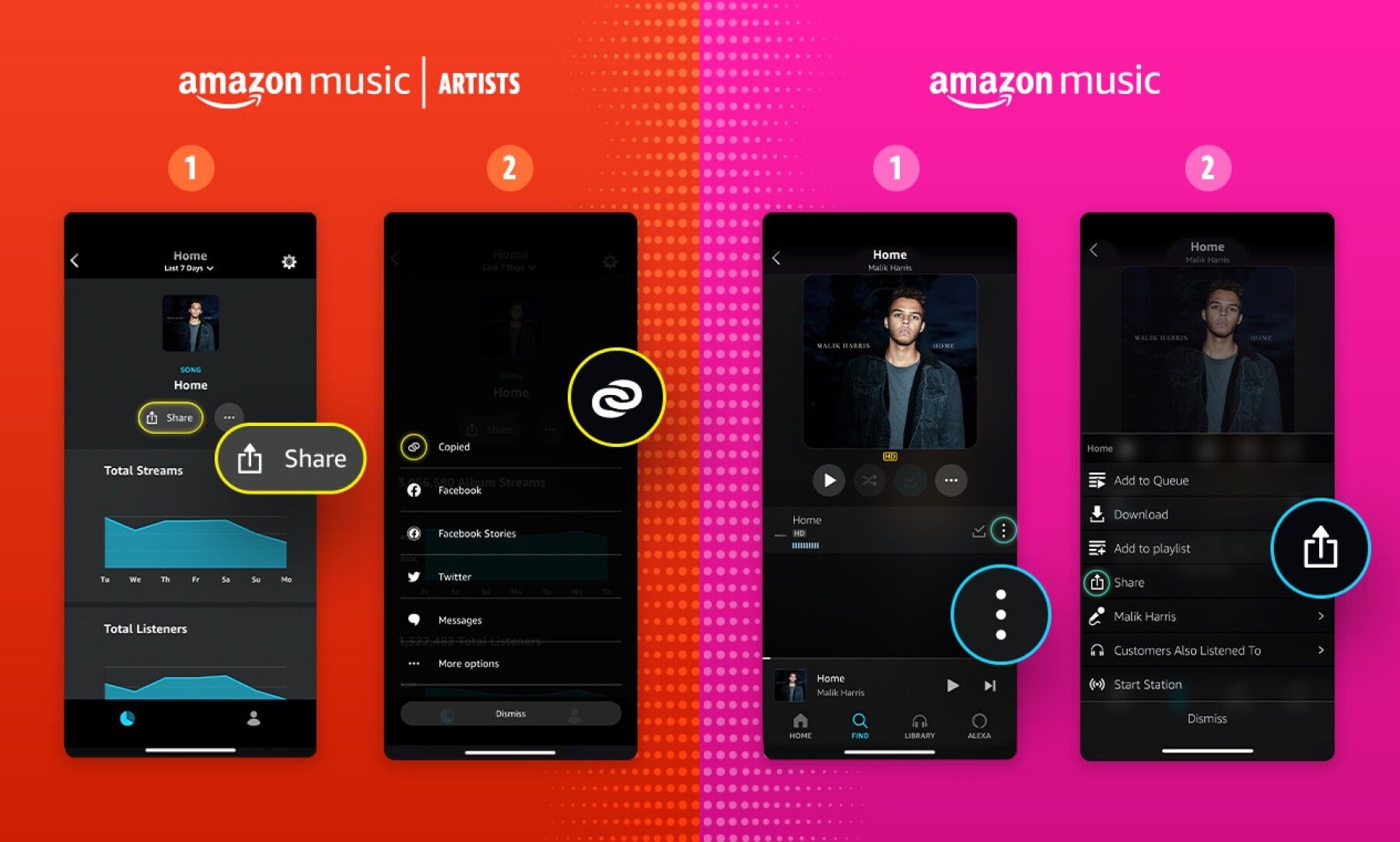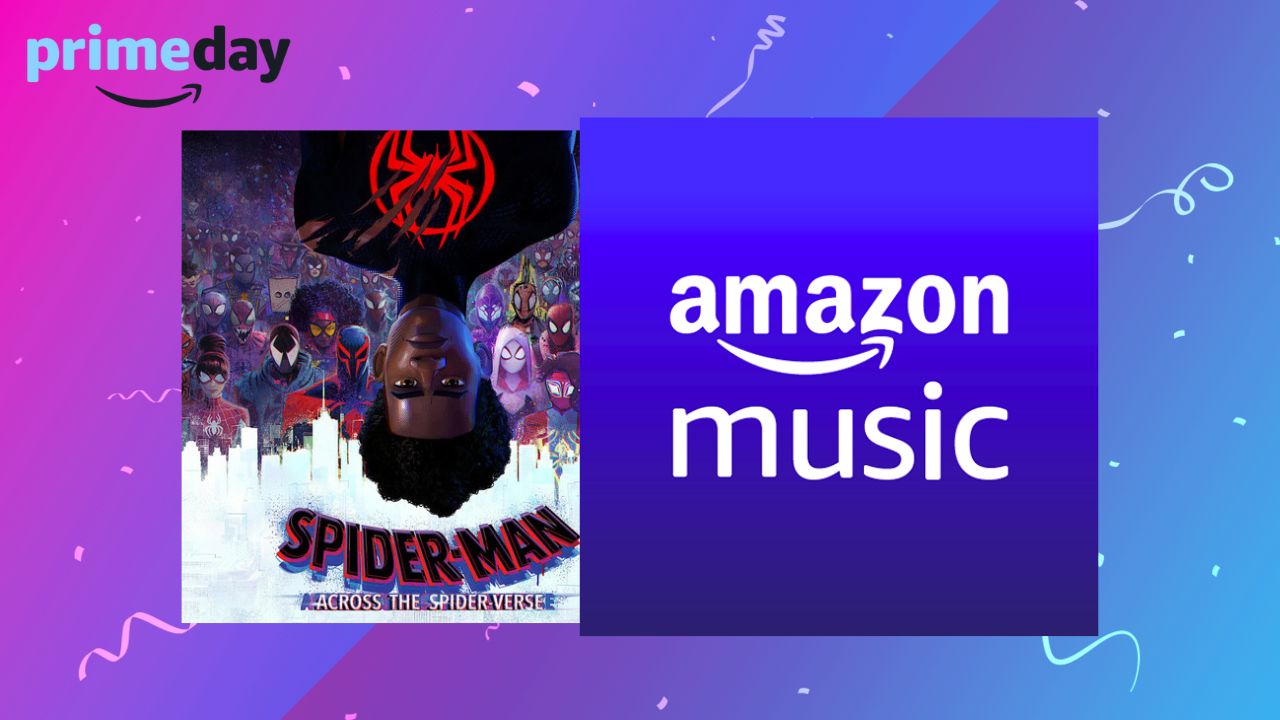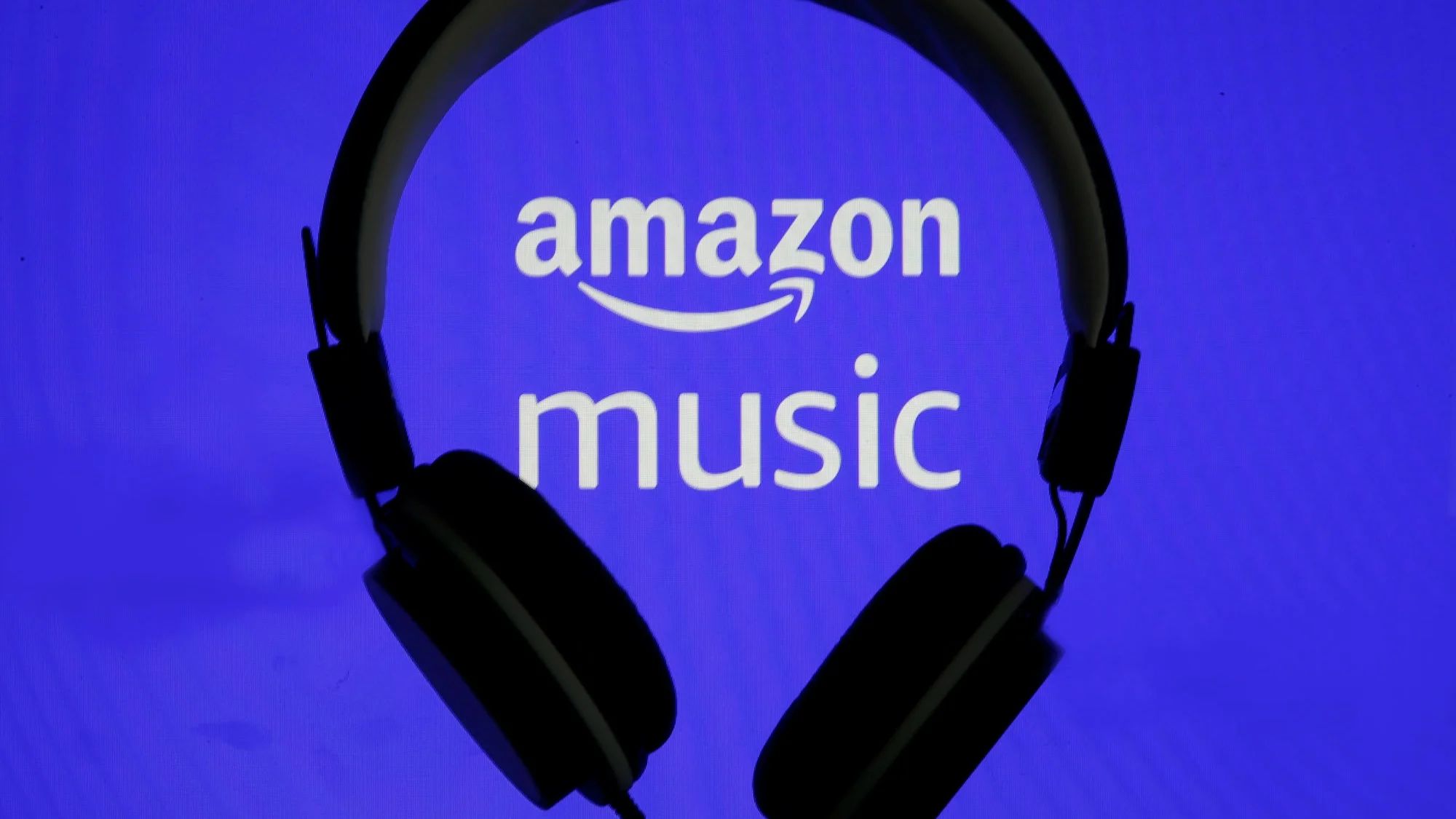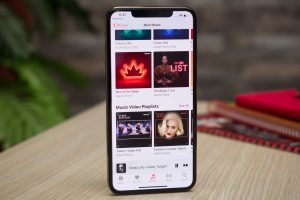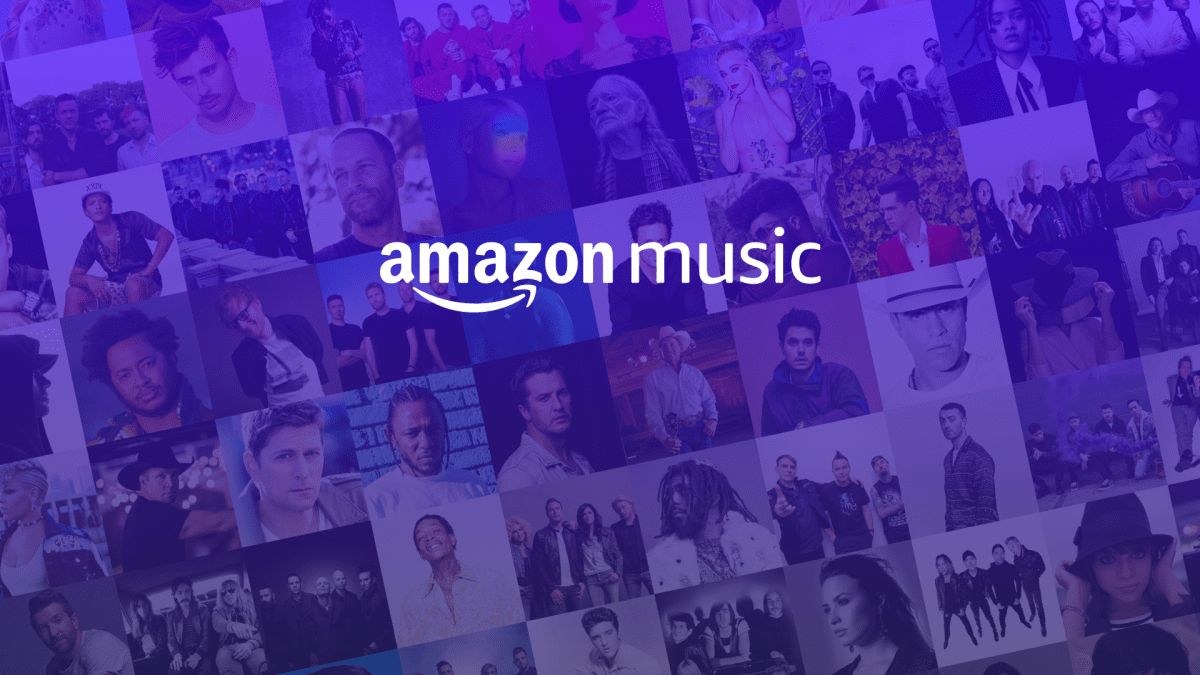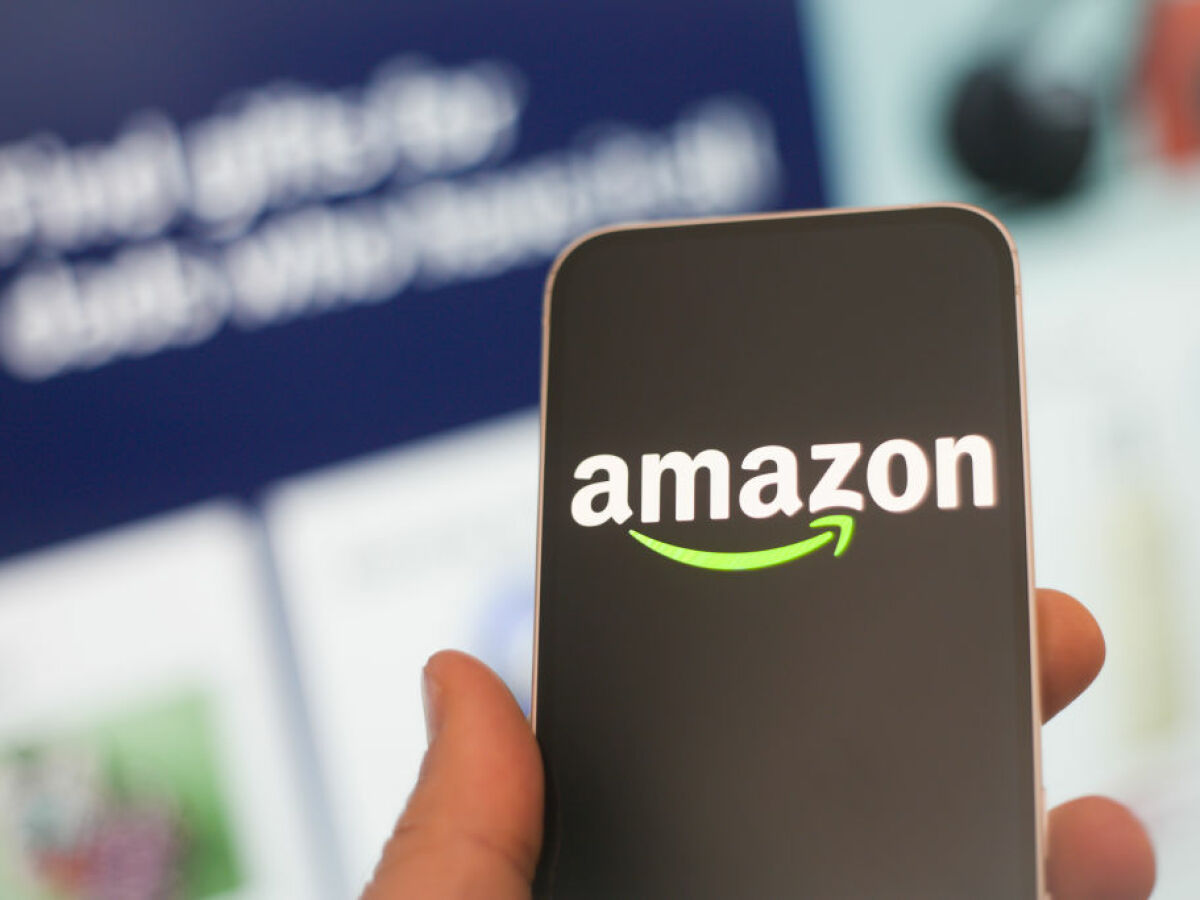Introduction
Welcome to the world of music streaming, where artists can now reach a global audience with just a few clicks. In this digital age, platforms like Amazon Music have become popular choices for both listeners and artists. But have you ever wondered how exactly Amazon Music pays its artists? In this article, we will dive into the intricacies of royalty systems and explore how Amazon Music compensates the talented musicians who bring joy to our ears.
Before we dig deeper, let’s understand what royalties are and why they matter in the music industry. Royalties refer to the payments made to artists and copyright holders when their music is used or played. These payments serve as a way to compensate artists for their creative work and incentivize them to continue producing incredible music.
There are different types of royalties in the music industry, including mechanical royalties, performance royalties, and streaming royalties. Mechanical royalties are earned when music is reproduced or distributed, while performance royalties are earned when music is publicly performed. Streaming royalties, on the other hand, are earned when music is streamed on platforms like Amazon Music.
As one of the major players in the music streaming market, Amazon Music operates on a well-defined royalty system. The system ensures that artists receive fair compensation for their music based on various factors such as the number of streams and the royalty rates set by Amazon. By understanding how this system works, artists can have a clearer picture of what to expect in terms of earnings from their music on the platform.
Understanding Royalties
Before delving into Amazon Music’s specific royalty system, it’s important to have a solid grasp on the concept of royalties and how they are calculated in the music industry as a whole. Royalties are the payments made to artists and copyright holders for the use of their music. They act as a form of compensation for the creative efforts and intellectual property rights involved in creating and producing music.
There are different types of royalties that artists can earn, with the most common ones being mechanical royalties, performance royalties, and streaming royalties. Mechanical royalties are earned when music is reproduced or distributed, such as through physical sales or digital downloads. Performance royalties, on the other hand, are earned when music is publicly performed, whether it be through radio airplay, live performances, or even background music playing in a restaurant.
Streaming royalties have gained significant prominence in recent years, thanks to the rise of music streaming platforms like Amazon Music. With streaming, artists can make their music available to a global audience, and royalties are generated based on the number of streams their music receives. This type of royalty is calculated using specific formulas and rates determined by the streaming platform.
The calculation of streaming royalties involves several factors, including the total number of streams, the duration of each stream, and the revenue generated by the streaming platform. The revenue is typically derived from subscription fees paid by users or through advertising revenue for free tier users. The streaming platform then allocates a portion of that revenue to be distributed as royalties to the artists whose music was streamed.
It’s important to note that there can be variations in royalty rates and calculations across different music streaming platforms. Each platform has its own unique system for determining how much artists are compensated for their music. This is why it’s crucial for artists to understand the specific royalty system in place on the platforms they choose to distribute their music.
Mechanical Royalties
When it comes to music distribution, mechanical royalties play a significant role. These royalties are earned when music is reproduced or distributed in physical or digital formats. Examples of reproduction include CD sales, digital downloads, and interactive streaming. Mechanical royalties are typically paid to songwriters, composers, and publishers for the use of their musical compositions.
In the past, mechanical royalties were primarily earned through physical sales, such as CDs or vinyl records. However, with the digital revolution, the landscape has evolved. Nowadays, digital downloads and interactive streaming have become the primary sources of mechanical royalty earnings for artists.
The calculation of mechanical royalties can vary depending on the country and the specific agreements between the artist and the music publisher or distributor. In the United States, for example, the statutory mechanical royalty rate is set by the U.S. Copyright Royalty Board. This rate is adjusted periodically and applies to physical sales and digital downloads.
For interactive streaming services like Amazon Music, the calculation of mechanical royalties is often based on a percentage of the streaming platform’s revenue or a pro-rata share of the total revenue generated from streams. The specific rate and calculation method can vary depending on the contractual agreement between the artist and the music publisher or distributor.
It’s crucial for artists to understand the terms of their agreements and the royalty rates associated with the distribution of their music. This knowledge empowers artists to make informed decisions about their music and ensures that they are fairly compensated for their creative efforts.
Overall, mechanical royalties are an essential component of the music industry, ensuring that songwriters and composers receive compensation for the use of their creative works. Whether it’s through physical sales or digital downloads, these royalties play a vital role in supporting the artistic endeavors of musicians worldwide.
Performance Royalties
In addition to mechanical royalties, performance royalties are another important source of revenue for artists in the music industry. Performance royalties are earned when music is publicly performed, whether it be through radio airplay, live performances, or even background music playing in public spaces like restaurants or retail stores.
Performance royalties are typically collected and distributed by performance rights organizations (PROs) such as ASCAP, BMI, and SESAC in the United States. These organizations work on behalf of artists and copyright holders to ensure that they are fairly compensated for the public performance of their music.
The calculation of performance royalties can vary depending on the specific agreement between the artist and the PRO. In general, it is based on a formula that takes into account factors such as the usage of the music, the size of the audience, and the frequency of the performances.
For radio airplay, performance royalties are typically determined based on the number of times a song is played and the audience reach of the radio station. PROs collect data from radio stations and use it to allocate royalties to the artists whose music was played.
Live performances also generate performance royalties, which are collected through blanket licenses. These licenses allow venues and promoters to host live music performances while ensuring that artists are compensated for their work. The fees for these licenses are typically based on factors such as venue capacity and ticket sales.
Performance royalties are an important source of income for artists, especially for those who frequently perform live or receive significant airplay on radio stations. They provide ongoing revenue throughout an artist’s career, even long after the initial release of a song or album.
It’s important for artists to register their music with the appropriate PROs and keep track of their performances to ensure they receive the performance royalties they are entitled to. By doing so, artists can maximize their earnings and continue to pursue their passion while being fairly compensated for their musical creations.
Streaming Royalties
Streaming royalties have become a significant source of income for artists in the digital age. With the rise of music streaming platforms like Amazon Music, artists have the opportunity to reach a global audience and earn royalties based on the number of streams their music receives.
Streaming royalties are calculated based on the total number of streams an artist’s music accumulates on a platform. The revenue generated from subscription fees or advertising on the platform is then allocated to the artists based on their share of the total streams.
The exact calculation of streaming royalties can vary depending on several factors, including the streaming platform’s specific royalty system and the artist’s contractual agreements. However, there are two primary methods used to calculate streaming royalties: the pro-rata model and the user-centric model.
The pro-rata model, also known as the market share model, distributes streaming revenue based on the popularity of an artist’s music relative to other artists on the platform. In this model, the revenue is divided among all artists based on the percentage of their total streams in relation to the overall streams on the platform.
The user-centric model, on the other hand, allocates the revenue solely based on the streams of an individual user. In this model, the subscription fees paid by a user are divided among the artists whose music the user streamed during that month. This model aims to ensure that each artist receives a fair share of the revenue from the users who specifically listen to their music.
It’s important to note that different streaming platforms may use different models to calculate royalties. Each model has its own advantages and disadvantages, and artists’ earnings can vary based on which model is employed by the platform they distribute their music on.
While streaming royalties may seem modest compared to other revenue streams like physical sales or merchandise, they have the potential to accumulate over time as an artist’s music continues to be streamed by listeners around the world. It’s crucial for artists to not only understand the calculation of streaming royalties but also to actively promote their music to increase streams and maximize their earnings.
Overall, streaming royalties have revolutionized the music industry, providing artists with unprecedented opportunities to share their music with a broad audience and generate revenue based on the popularity of their streams. With the right strategies and a strong presence on streaming platforms, artists can benefit from the growing popularity of music streaming while being appropriately rewarded for their artistic efforts.
Amazon Music Royalty System
Amazon Music has its own unique royalty system that determines how artists are paid for streams. While the exact details of the system may not be publicly disclosed, some information is available to shed light on how royalties are calculated on the platform.
Amazon Music operates on a revenue-sharing model, where a portion of the platform’s revenue is allocated to artists based on the number of streams their music receives. The revenue comes from subscription fees paid by users and advertising revenue for free-tier users.
The specific percentage of revenue that is allocated to artists may vary, depending on factors such as the artist’s contractual agreements and the type of subscription plan the user has. Amazon Music may also take into account factors like the popularity of the artist or the total number of streams on the platform during a specific period.
It’s important to note that the royalty rates and calculations for Amazon Music can differ from other streaming platforms. Artists should familiarize themselves with the specific terms and conditions of their distribution agreement with Amazon Music to understand how their royalties are determined.
Additionally, Amazon Music offers a program called Amazon Music for Artists, which provides artists with data and insights about their music, including streaming metrics and listener demographics. This program allows artists to monitor and track the performance of their music on the platform, helping them make informed decisions and optimize their streaming strategy.
It’s worth noting that independent artists who self-distribute their music may have a different royalty arrangement compared to artists signed to major record labels, who often have more complex agreements in place. Independent artists can retain a higher percentage of their revenue from streams on platforms like Amazon Music, while major label artists may have their royalties distributed through their record labels.
Overall, Amazon Music’s royalty system aims to provide fair compensation for artists based on the number of streams their music generates on the platform. Artists should stay informed about the specifics of their agreement and utilize resources like Amazon Music for Artists to maximize their earnings and make data-driven decisions to further their music careers.
Amazon’s Royalty Rates
Amazon Music offers competitive royalty rates to compensate artists for their music streams on the platform. While the exact royalty rates may vary depending on factors such as the artist’s distribution agreement and the user’s subscription plan, Amazon Music ensures that artists receive a fair share of the revenue generated.
For Amazon Music’s streaming service, the royalty rates are typically based on a percentage of the platform’s revenue. However, the specific percentage may not be publicly disclosed and could vary depending on various factors, including the artist’s popularity and the number of streams their music receives.
It’s important to note that different tiers of Amazon Music’s service, such as the premium subscription, ad-supported free tier, and Amazon Prime Music, may have different royalty rates associated with them. The revenue generated from each of these tiers is distributed to artists accordingly.
Additionally, Amazon Music may have different royalty rates for different regions or countries, depending on licensing agreements and regional market considerations. Artists should be aware of these regional differences and understand how they might impact their royalty earnings.
While the exact royalty rates on Amazon Music may not be publicly available, artists can leverage tools like Amazon Music for Artists to gain insights into their streams and earnings. This program provides valuable data about listenership and streaming metrics, allowing artists to track their performance and make data-driven decisions to further their career.
It’s worth noting that the royalty rates on Amazon Music can vary from other streaming platforms. Artists should consider exploring multiple platforms to diversify their revenue streams and optimize their earnings.
Overall, Amazon Music offers competitive royalty rates to compensate artists for their music streams on the platform. Artists should stay informed about the specifics of their distribution agreement with Amazon Music and utilize available resources to track their earnings and make data-driven decisions to maximize their streaming revenue.
Calculating Royalties on Amazon Music
Calculating royalties on Amazon Music involves several factors, including the number of streams an artist’s music receives and the royalty rates set by Amazon. While the exact formula for calculating royalties on the platform may not be publicly disclosed, some key elements can provide insight into how earnings are determined.
First, the total revenue generated by Amazon Music from subscription fees and advertising is a crucial factor in calculating royalties. This revenue is then allocated to artists based on the number of streams their music receives in relation to the overall streams on the platform.
For example, if an artist’s music accounts for 1% of the total streams on Amazon Music, they can expect to earn approximately 1% of the revenue allocated for royalties. The exact royalty rate associated with each stream can vary depending on the artist’s distribution agreement and other factors such as the subscription plan or region.
It’s important to keep in mind that royalty rates on Amazon Music may differ from other streaming platforms. Artists should familiarize themselves with the specifics of their distribution agreement to understand the exact rates and calculations that apply to their music.
In addition to the number of streams and royalty rates, artists should also consider the duration of each stream when calculating royalties. Typically, artists are paid based on the proportionate length of each stream. For example, a longer stream of a song will likely generate a higher royalty compared to a shorter fragment of the same song.
It’s worth noting that the exact method of calculating royalties on Amazon Music may be proprietary information. However, artists can gain insights into their streaming metrics and earnings through programs like Amazon Music for Artists, which provides valuable data to track performance and optimize revenue generation strategies.
Overall, calculating royalties on Amazon Music involves considering the number of streams, the royalty rates set by the platform, and potentially the duration of each stream. Artists should stay informed about the terms of their distribution agreement and leverage available resources to monitor their earnings and make informed decisions to maximize their streaming revenue.
Payout Schedule
For artists on Amazon Music, understanding the payout schedule is essential for managing their finances and projecting their earnings. While the specific payout schedule may vary depending on factors such as the artist’s distribution agreement and the region, there are some general guidelines to consider.
Amazon Music typically operates on a monthly payout schedule, meaning that artists can expect to receive their royalties on a monthly basis. However, it’s important to note that there may be a delay between the end of the month and the actual payout date. This delay allows for proper calculation and processing of the streaming data and royalty payments.
Artists should also be aware that there may be a minimum earnings threshold that must be met before a payout is initiated. This threshold ensures that artists receive meaningful payments and prevents the processing of micropayments for minimal streams.
When it comes to receiving royalties, Amazon Music provides multiple payout options. Artists can choose to receive their earnings through various methods, including direct deposit, wire transfer, or check. The specific options available may differ depending on the artist’s location and the terms of their distribution agreement.
It’s important for artists to keep track of their earnings and ensure that their account information is up to date to avoid any delays or issues with the payout process. Artists can refer to their Amazon Music for Artists account or reach out to the appropriate support channels for any inquiries or updates regarding their payouts.
For artists with multiple songs or albums on the platform, it’s worth noting that the payout is typically aggregated, meaning that royalties from all streams across an artist’s catalog are combined and paid out as a single sum. This streamlines the payment process and simplifies the accounting for artists.
While Amazon Music strives to provide timely and accurate payouts, it’s important to have realistic expectations. The amount and frequency of royalties received will depend on various factors, including the popularity of the artist’s music, the number of streams, and the royalty rates set by Amazon.
Overall, artists on Amazon Music can anticipate monthly payouts, subject to meeting any applicable earning thresholds. Understanding the payout schedule and staying informed about the specific terms of their distribution agreement allows artists to effectively manage their earnings and make informed decisions regarding their music careers.
Factors Affecting Royalty Payments
Several factors can influence the royalty payments that artists receive from streaming platforms like Amazon Music. Understanding these factors is crucial for artists to have a realistic expectation of their earnings and make informed decisions about their music careers.
1. Streaming Market Share: The popularity and demand for an artist’s music influence the number of streams they receive. Artists with a larger fan base and more listeners are likely to have higher royalty payments compared to those with a smaller following.
2. Royalty Rates: The royalty rates set by Amazon Music play a significant role in determining artists’ earnings. These rates can vary depending on factors such as the artist’s distribution agreement, the type of subscription plan users have, or the region in which the music is streamed.
3. Length of Song: The duration of a song also affects royalty payments. Artists are typically paid based on the proportionate length of each stream. A longer song will generate higher royalties compared to a shorter one, even if both have the same number of streams.
4. Geographic Location: Streaming platforms often have different royalty rates for different regions or countries. These regional variations can impact an artist’s earnings, as streaming habits and demographics differ across geographical locations.
5. Type of Subscription: The type of subscription plan that listeners have can impact royalty payments. For example, premium subscribers who pay a monthly fee may generate higher royalties compared to users on the ad-supported free tier.
6. Distribution Agreement: The terms of an artist’s distribution agreement with Amazon Music can greatly affect their royalty payments. Artists should carefully review and negotiate the terms to ensure they are receiving fair compensation for their music streams.
7. User Engagement: The level of user engagement with an artist’s music, such as listeners saving songs to their playlists or frequently revisiting their tracks, can impact the royalties earned. Higher engagement indicates a stronger connection with listeners and potentially leads to more streams.
8. Promotion and Marketing: Artists who actively promote their music and engage with their fan base are likely to generate more streams and higher royalty payments. Promotion efforts such as social media campaigns, collaborations, and live performances can help boost an artist’s visibility and increase their streaming numbers.
It’s important to note that while these factors influence royalty payments, there may be other variables at play specific to each artist’s situation. Artists should continually analyze and adapt their strategies to maximize their streaming revenue and reach a wider audience.
By understanding the factors that affect royalty payments, artists can make informed decisions about their music career, develop effective promotional strategies, and ensure they are receiving fair compensation for their creative work on platforms like Amazon Music.
Indie vs. Major Label Royalties
When it comes to streaming royalties, there are distinct differences between independent (indie) artists and those signed to major record labels. Understanding these differences is essential for artists to navigate the music industry and make informed decisions about their career paths.
Indie artists, who operate independently without the backing of a major label, often have more control over their music and a higher percentage of royalty earnings. They can retain a larger portion of their streaming revenue compared to artists signed to major labels. This is because indie artists typically have direct distribution agreements with platforms like Amazon Music, allowing them to negotiate favorable terms and retain more ownership of their music.
On the other hand, artists signed to major record labels often have complex label contracts that define their royalty rates and payment structures. Major labels handle the distribution and licensing of an artist’s music, but in return, they generally take a larger share of the royalty earnings. This is due to the resources and support provided by major labels, including marketing, promotion, and industry connections.
While major label artists may receive a smaller percentage of their streaming revenue, they benefit from significant promotional support and the potential for higher exposure. Major labels invest in marketing campaigns, radio airplay, and other promotional activities that can boost an artist’s popularity and increase their streaming numbers. This increased exposure often leads to more streams and potential for higher overall earnings.
Indie artists, on the other hand, have the flexibility to retain more artistic control and decision-making power, but they often have to shoulder the responsibility of self-promotion and building their fan base from scratch. They may need to invest in their own marketing efforts, live performances, and digital promotion to increase their streaming numbers and reach a wider audience.
It’s important for artists to carefully evaluate their goals and priorities when considering whether to stay independent or pursue a major label deal. For some, the independence and larger share of royalties are valuable, while others may prioritize the resources and support offered by major labels.
Ultimately, both indie and major label artists have the potential to generate substantial streaming revenue. The key is to understand the specific terms of any agreements and to strategically leverage the unique advantages of each pathway to maximize earnings and advance their music careers.
Artists should carefully consider their personal aspirations, financial goals, and long-term strategies when deciding between staying independent or pursuing a major label partnership. There is no one-size-fits-all approach, and each artist’s journey will be unique based on their individual circumstances and artistic vision.
Conclusion
Earning royalties as an artist on streaming platforms like Amazon Music is a crucial part of building a sustainable music career in the digital age. Understanding the intricacies of how royalties are calculated and the factors that influence them is essential for artists to navigate the music industry successfully.
Throughout this article, we explored the various types of royalties, including mechanical, performance, and streaming royalties. We delved into Amazon Music’s unique royalty system, discussing the revenue-sharing model and the factors that determine an artist’s earnings on the platform.
From the importance of understanding royalty rates to the impact of factors like streaming market share, geographic location, and the type of subscription plan, artists must stay informed and adapt their strategies to maximize their streaming revenue.
We also discussed the differences between royalty payments for indie artists and those signed to major labels. While indie artists often have more control and retention of royalties, major label artists benefit from significant promotional support and potential exposure.
In conclusion, artists must approach their music careers with a comprehensive understanding of royalties and how they are calculated. By leveraging available resources like Amazon Music for Artists and staying informed about the specific terms of their distribution agreements, artists can optimize their streaming revenue and make informed decisions to advance their music careers.
Ultimately, success in the streaming era requires a combination of talent, dedication, strategic decision-making, and adaptability. By staying informed about the latest industry trends and understanding how royalties work, artists can navigate the ever-evolving music landscape and thrive in the digital realm.







